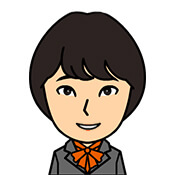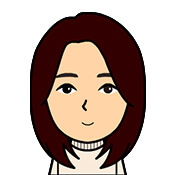
Use ‘-입니다’ or ‘-이/가 아니다’ to talk about “things” etc. instead of people.
Today’s topic is ‘이것/그것/저것’.
How to use ‘이것/그것/저것’.
Talking about things “-이다”.
Here we use “-이다” to talk about things too.
Talking about things.
아버지는 회사원입니다.
My father is an office worker.
↓↓↓
이것은 배추입니다.
This is napa cabbage.
This alone easily doubles the number of things that can be expressed.
Positional relationship to what you are pointing at is important.
이것/그것/저것 are used based on their positional relationship to the thing to which they refer.
The one closest to the speaker is ‘이것’.

이것 refers to something close to the speaker.
It is “그것” for something close to the listener.

그것 refers to something close to the listener, and from the listener’s point of view, it is 이것.
Things that are far from each other are ‘저것’.

저 것 refers to something remote and, as a rule, visible.
‘그것’ refers to things that are invisible to each other.

Use 그것 for “that” which is invisible.
Let’s express ownership and attributes together.
With -의, you can also express its owner, attributes, etc.

This is a Korean magazine.

It’s a letter from a friend.

That’s this year’s calendar.

That’s an old picture.
-의 is often omitted.
“이거, 그거, 저거” are used more in conversation.
Let’s learn even more shortened forms of those combined with postpositions.
In conversation, shortened versions of ‘이것, 그것, 저것’ are often used.
case1
| writing | 이것 | 그것 | 저것 |
|---|---|---|---|
| spearking | 이거 | 그거 | 저거 |
case2
| writing | 이것이 | 그것이 | 저것이 |
|---|---|---|---|
| spearking | 이게 | 그게 | 저게 |
case3
| writing | 이것은 | 그것은 | 저것은 |
|---|---|---|---|
| spearking1 | 이거는 | 그거는 | 저거는 |
| spearking2 | 이건 | 그건 | 저건 |
case4
| writing | 이것을 | 그것을 | 저것을 |
|---|---|---|---|
| spearking1 | 이거를 | 그거를 | 저거를 |
| spearking2 | 이걸 | 그걸 | 저걸 |
These will take some time to get used to hearing.

This is my mobile phone.

That’s our company ID.

That’s my sister’s bicycle.

That was just tap water.
Abbreviations should be actively learned too.
Learn a word.
| 지갑 | wallet | 시계 | clock |
| 가방 | bag | 안경 | glasses |
| 펜 | pen | 연필 | pencil |
| 지우개 | eraser | 책 | book |
| 사전 | dictionary | 휴지 | tissue |
| 노트북 | computer | 휴대폰 | mobile phone |
| 거울 | mirror | 화장품 | cosmetic |
Ask questions with interrogatives.
When you don’t know what it is, use “무엇” or “얼마”.
If you are unsure about what 이것 or 그것 is referring to, use question words.

What is this?

How much is that?

What meat is that?
If you don’t know the name or type use 무엇 or 무슨, if you want to know the amount or quantity use 얼마.
What is the short form of 무엇?
무엇 also has a shortened form.

What is that?

What on earth is the problem?
무엇 will be used more often in the form of 뭐.
It is also worth remembering that ‘뭐입니까’ is more often pronounced shortened to “뭡니까” in conversation.
Other cases related to distance.
Distance in the use of “이・그・저”.
“이, 그, 저” is used to refer to specific things.

What is this book about?

Who is in the picture?

What is that building?
The distance and usage can be considered the same as “이것, 그것, 저것”.
“여기, 거기, 저기” to indicate a place or location.
“여기, 거기, 저기” which indicate a place or location, are also similar.

This is the Seoul Museum.

The place is now a subway station.

There’s the old hospital.
This is also similar to “이, 그, 저”.
Which is supposed to be “어느”?
The word “which” becomes 어느, but for some reason 어떤 is often used.

Which is my bag?

Which is my shoe?

Which building is a bank.
Let’s remember this as it is.
Let’s practice by actually pointing to “이거, 그거” and so on.